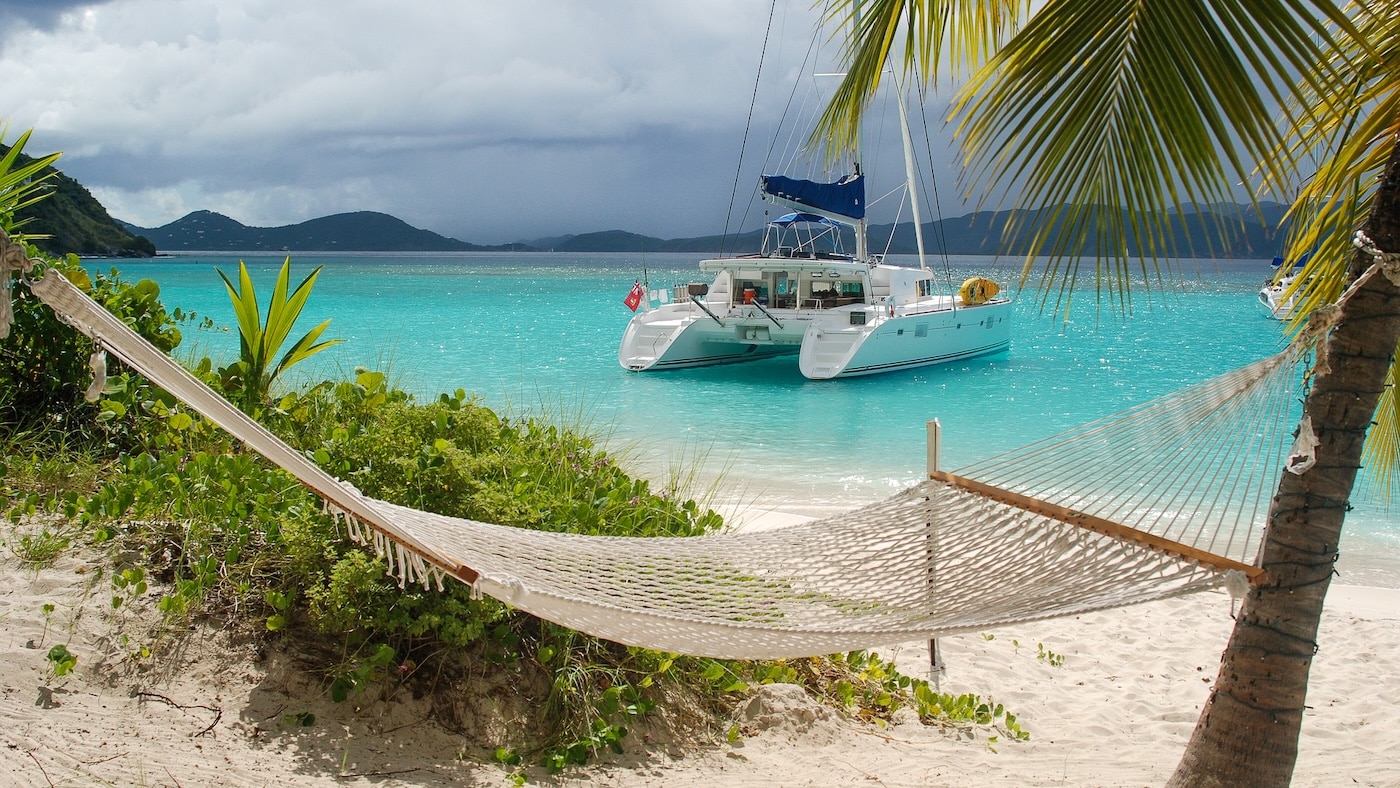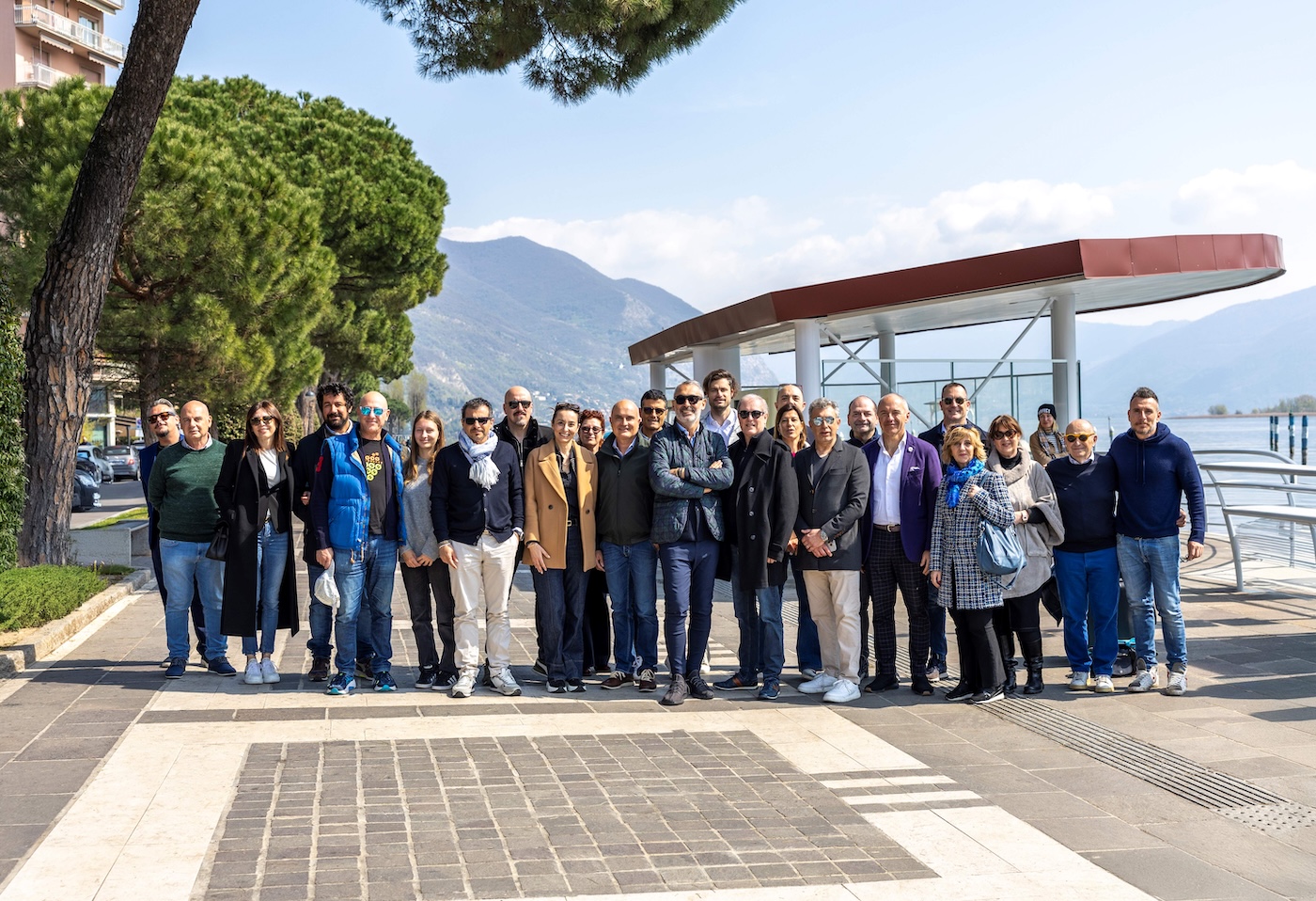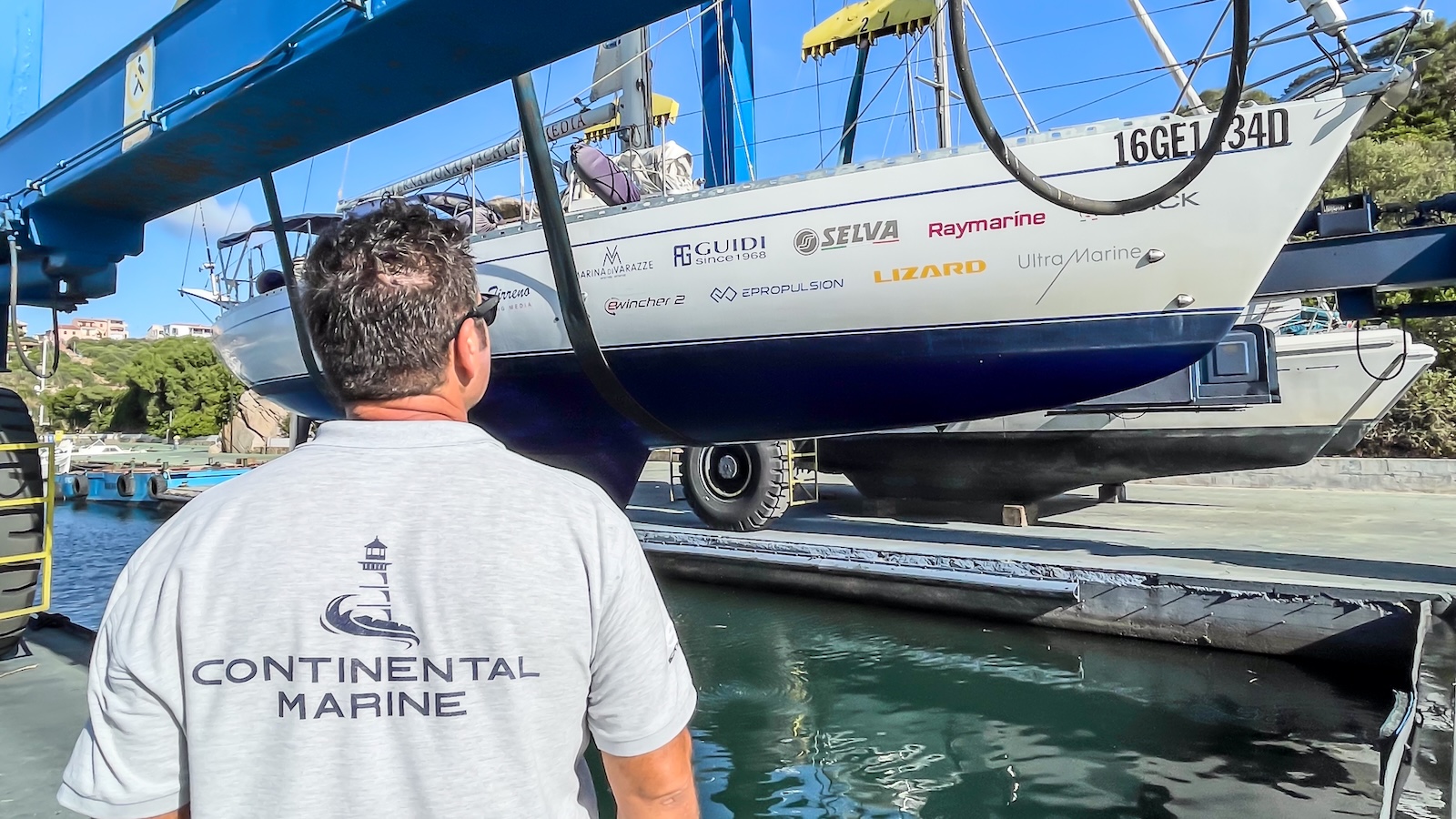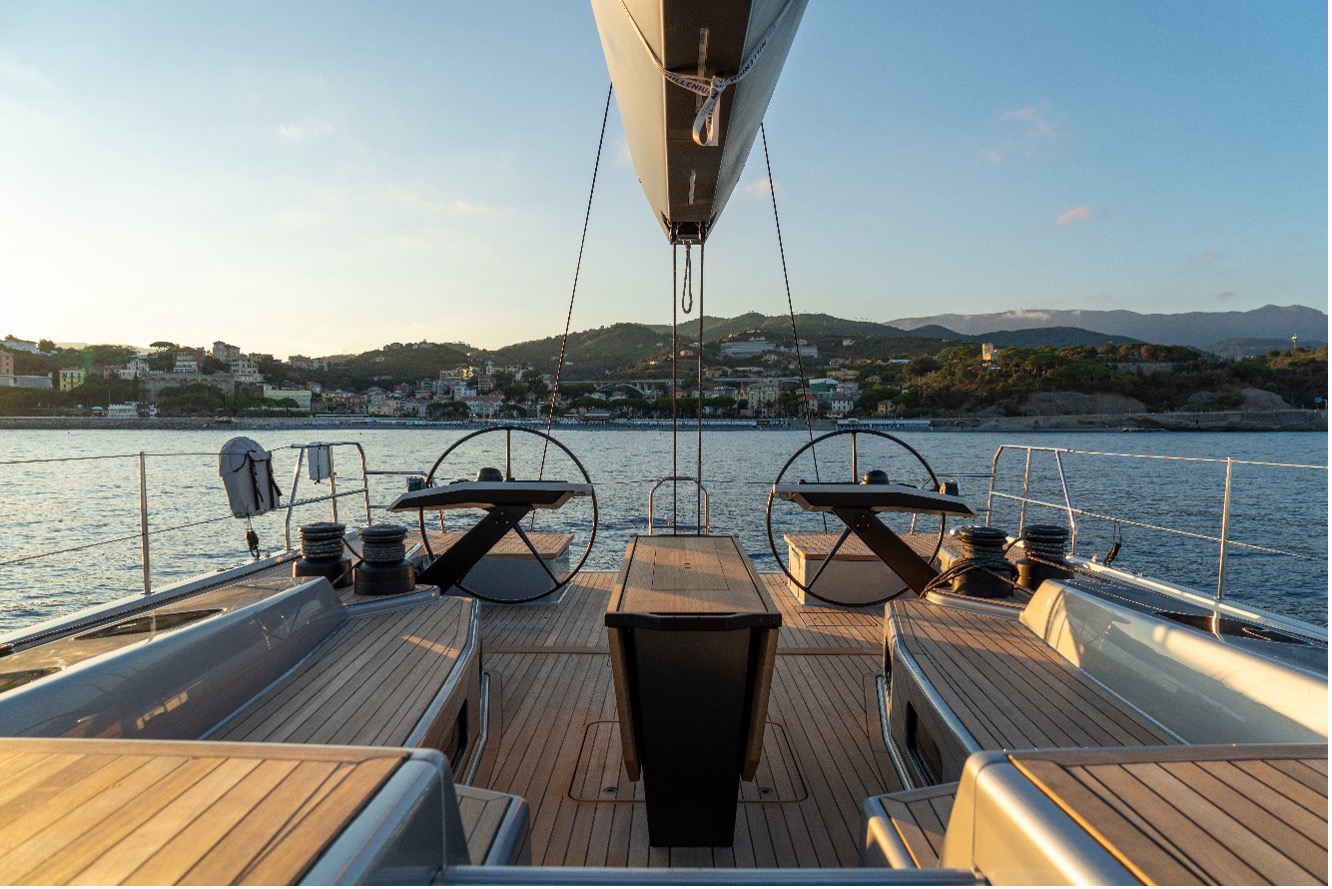The ultimate guide to sailing in the Caribbean
Sure, you can sail in the Mediterranean during the winter, and it’s often not even that cold anymore, but let’s be honest: who hasn’t dreamed of spending a winter in the warm Caribbean waters? Sailing in the Caribbean means discovering lush islands with diverse landscapes, meeting unique cultures and traditions, and, most importantly, experiencing ocean sailing.
Of course, most of the coastlines explored by boat are on the leeward side of the islands, sheltered from the trade winds that blow consistently from the east/northeast at these latitudes. These islands provide natural protection from the wind. However, crossings between islands, which can vary in length depending on your chosen route, are genuine trade wind passages—exhilarating with a steady breeze we can only dream of in the Mediterranean, though sometimes challenging.
Around the farthest points of the islands, the wind may strengthen, the seas may become rougher, and squalls are not uncommon. These fast-moving squalls, carried by the trade winds, can be dangerous both while sailing and at anchor.
There are also some peculiarities of the area to keep in mind. For instance, there are very few lights, making nighttime sailing in the Caribbean challenging unless you have detailed local knowledge of the places. Close to shore, it’s generally not advisable, as small, unlit fishing boats are common. Overall, it’s better to rely on experienced sailors who know the region and are well-equipped for these waters.
That said, sailing in the Caribbean is an experience we highly recommend (you can check out the boating vacation options on our website). Beyond the joy of escaping the cold and fog back home, sailing is the ideal way to explore multiple islands in a single trip.
You can sail among the Grenadines, a group of islands of varying sizes—the smallest, Mopion, is a tiny white sand island with a single umbrella in the middle. Located in the southernmost part of the Caribbean Sea, these islands are seemingly tailor-made for sailing. Farther north, the French Antilles—Martinique, Dominica, and Guadeloupe—are less touristy and offer pristine landscapes and exceptional marine reserves for snorkeling.
The British West Indies—Antigua, Barbuda, and the Virgin Islands—are famous for their long white and pink beaches and frequent encounters with sea turtles (also common in other islands).
The Perfect Season for Sailing the Caribbean
The best season for sailing in the Caribbean typically runs from December to May. For optimal conditions, plan your trip from February onward, which offers the most favorable weather.
Trade Winds and Currents
Unless your itinerary involves upwind sailing, the trade winds make Caribbean sailing delightful. These consistent northeast winds ensure comfortable and swift journeys.
If you plan to explore the northern Caribbean, keep in mind the influence of ocean currents. The Atlantic coast of the Antilles feels the impact of the Antilles Current, which flows northwest and joins the powerful Gulf Stream north of the Bahamas.
Sailing the Caribbean: mind shallow waters
It is no coincidence that catamarans are the most recommended choice for these waters. These islands are renowned for their coral reefs and pristine lagoons, which are naturally characterized by very shallow waters.
For this reason, it’s essential to study routes and approaches to the coast using updated nautical charts. However, even more importantly, when nearing an island, it’s advisable to slow down and have a crew member positioned at the bow to visually check the seabed. This isn’t the Mediterranean, and nautical charts here are not as precise.
The most popular destinations and anchorages
If you are coming from Europe and plan to sail to the Caribbean after crossing the Atlantic Ocean, your route has almost certainly brought you to Saint Lucia, which is also the destination of the legendary ARC (Atlantic Rally for Cruisers). On this island, there are two anchorages you definitely cannot miss: Marigot Harbour and the famous Anse des Pitons.
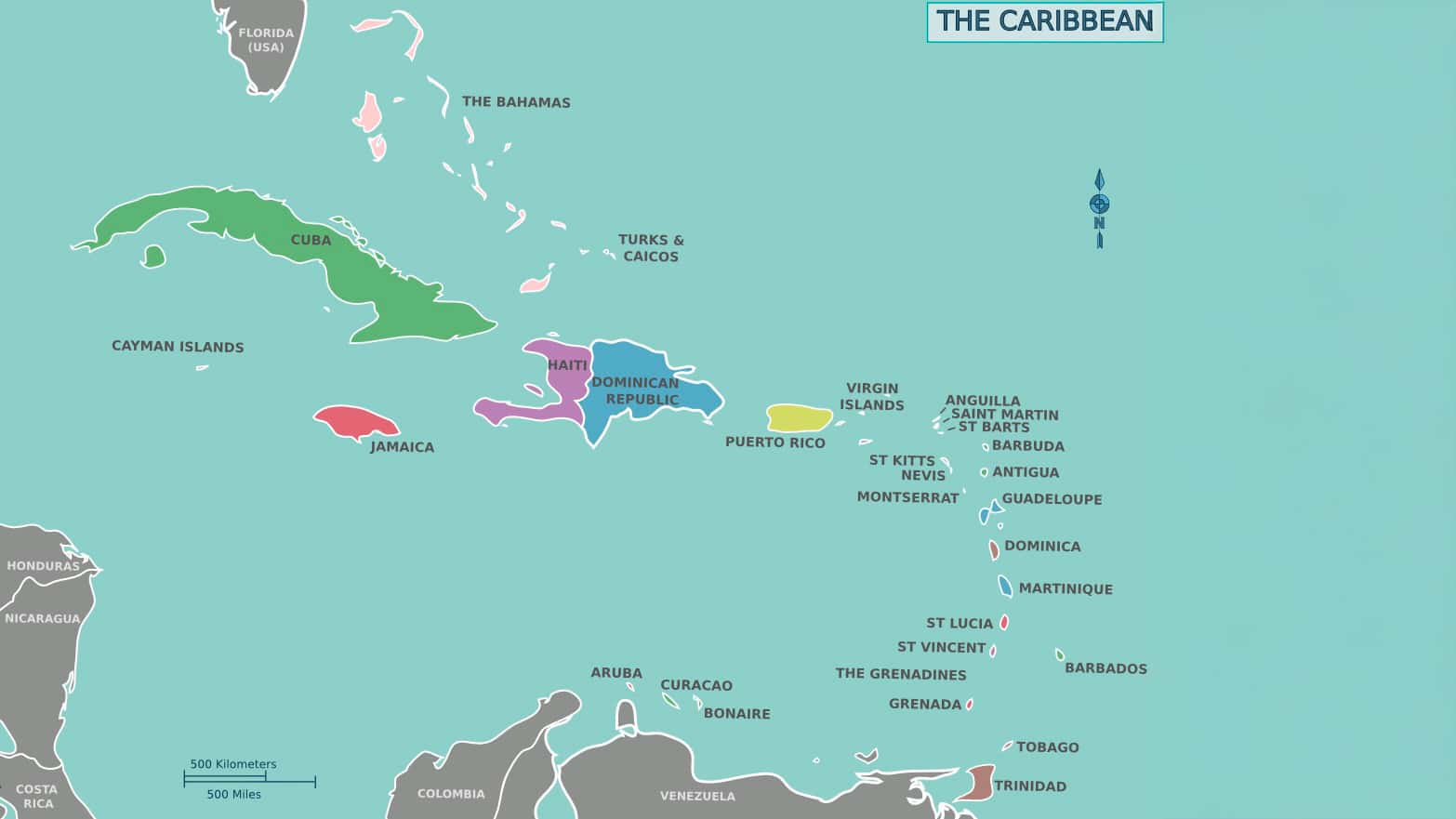
n the British Virgin Islands, you definitely can’t miss White Bay, Diamond Bay, and Cane Garden. Likewise, in the U.S. Virgin Islands, you must visit the famous Francis Bay and, if you can manage to pronounce it, Hawksnest Bay.
If your curiosity leads you to sail to the Caribbean, in Martinique, you cannot miss Sainte Anne, Saint-Pierre, and of course, the legendary Anse Noire. In the Grenadines and St. Vincent, the most popular spots are: Mayreau Island, where you can anchor at Windward Bay or Saline Bay, while on Carriacou Island, your anchorage will naturally be Tyrell Bay.
In Grenada, the anchorage at Mangrove is a must, while in Guadeloupe, you simply must spend a night at Baie Mahault, Deshaies, and of course, Point-à-Pitre.
For those seeking white sand beaches and a more arid landscape, Anguilla is the place to be. Prime anchorages here are Road Bay and Crocus Bay, though Shoal Bay East is a must-see, often considered the island’s most beautiful beach.
In Antigua and Barbuda, volcanic islands, you’ll find excellent anchorages at Nonsuch Bay or Palmetto Point. Over in Dominica, be sure to visit the renowned Prince Rupert Bay.
Saint Kitts and Nevis, though less frequented due to their unique landscapes, offer White House Bay, where you can also explore an extinct volcano. For a touch of relaxation, the Caribbean offers it all.
Finally, if you miss European vibes and love nightlife, visit Saint Martin. Half French (north) and half Dutch (south), it’s officially an outermost region of the European Union. Best anchorages include Baie de Grand Case and Friar’s Bay.
In conclusion, with about 7,000 islands in the Caribbean, you can sail here for a long, long time without ever seeing the same island twice!

